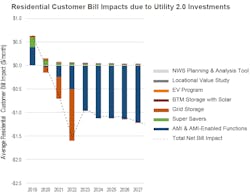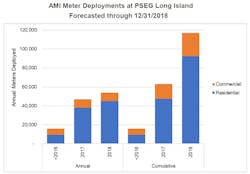New York Governor Andrew M. Cuomo and his policymakers have received a great deal of credit for the state’s efforts at comprehensive energy policy improvements under the Reforming the Energy Vision (REV) initiative. So it may come as a surprise that some large utilities in New York have been behind the curve, compared to the United States as a whole, when it comes to the portion of their distribution system enjoying the benefits of Advanced Metering Infrastructure (AMI).
If regulators allow PSEG Long Island to proceed with its AMI plans, AMI installation levels will go from way below the U.S. average of 50%, to way above it.
PSEG Long Island’s recently released Integrated Resource Plan (IRP), provides a good object lesson in how to socialize advanced meters with customers so as to ensure there are no bad surprises.
According to the IRP, AMI and its “enabled functionalities and services” are “the cornerstone of the Utility 2.0 Roadmap, accounting for $498 million in expected benefits versus $315 million in proposed costs.”
The AMI-related benefits are, according to PSEG Long Island’s IRP, “from the societal perspective,” and are “driven primarily by operations and maintenance (O&M) savings, reduced customer outage costs, reduced utility outage restoration cost, and avoided capacity-related costs, while enabling vital customer information, tools, and solutions.”
The report, which summarizes forward-looking benefit-cost analysis for AMI and AMI-enabled functions, indicates an overall net benefit for Long Island’s customers and society, consisting of several distinct components across a 20-year horizon. AMI’s domination is shown below, where we excerpt from the original PSEG Long Island chart a subset of the projected benefits across a shorter time span:
PSEG Long Island already has a strong foundation with its AMI work. The utility “is leveraging the island-wide AMI communications network and by the end of 2018 will have installed approximately 10% of the customer base (115,000 meters) measuring over 40% of the system energy.
“Through these installations, PSEG Long Island has experienced various benefits which include a reduction in estimated bills, remote service operational benefits, improved workforce management, enhanced customer tools, improved customer outreach, and improved data privacy standards and exceptions management.”
The full PSEG Long Island Utility 2.0 IRP is at this link.





